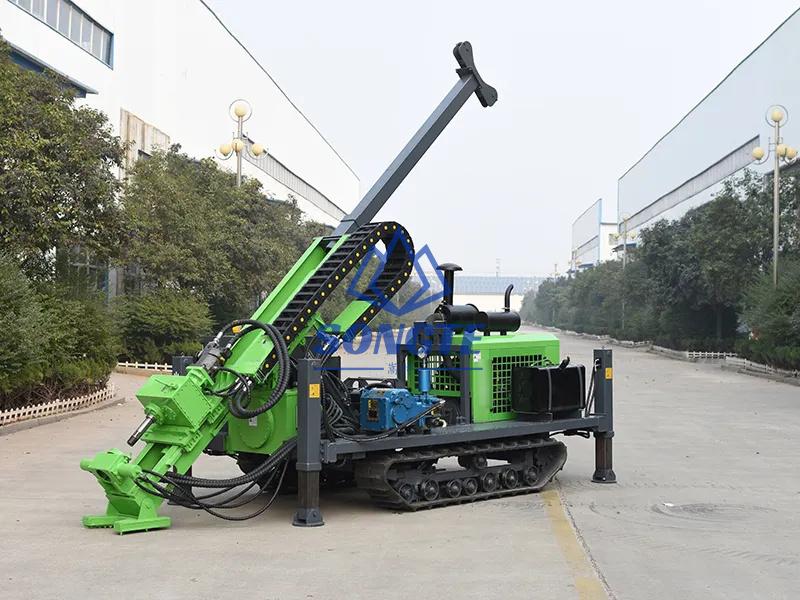Geological core drilling rigs are essential equipment used in the exploration and extraction of mineral resources from the earth’s crust. These rigs are responsible for drilling boreholes into the earth, which are used to extract geological samples for analysis. However, like any other piece of machinery, core drilling rigs require regular maintenance and proper operation to ensure their longevity and efficiency. In this article, we will discuss the operation and maintenance of geological core drilling rigs during operation.

Crawler Mineral Exploration Core Drilling Rig 300m~1400m (SC-600L/SC-800L/SC-1000L )
Operation of Geological Core Drilling Rigs
Before operating the core drilling rig, it is essential to ensure that all the safety measures are in place. The operator should wear appropriate personal protective equipment, including a hard hat, safety glasses, steel-toed boots, and gloves. The drill site should be cleared of any debris or obstacles that could interfere with the drilling process.
The first step in operating a geological core drilling rig is to position the rig in the desired location. This is usually done by using a surveyor’s equipment to mark the location where the drilling will take place. The rig is then positioned using hydraulic jacks or leveling screws to ensure that it is stable and level.
The next step is to attach the drill bit to the drilling rod and insert it into the hole. The drilling process is then initiated by turning on the rig’s engine, which powers the hydraulic system. The hydraulic system powers the rotation of the drill bit and the feed system, which controls the pressure and speed of the drill bit.
During the drilling process, the operator must monitor the drilling parameters, including the drilling speed, feed pressure, and the rotation speed of the drill bit. Any deviation from the recommended parameters could result in damage to the drilling equipment or a decrease in the efficiency of the drilling process.
Maintenance of Geological Core Drilling Rigs
To ensure the longevity and efficiency of a geological core drilling rig, regular maintenance is essential. Proper maintenance practices will help to prevent breakdowns and reduce downtime. Below are some essential maintenance practices for geological core drilling rigs:
Daily inspections: The operator should conduct a daily inspection of the drilling rig before starting the drilling process. This includes checking the engine oil, hydraulic oil, and water levels. The operator should also check the condition of the drill bit, drilling rod, and the feed system.
Lubrication: The rig’s moving parts, including the drill bit, drilling rod, and feed system, require regular lubrication. Proper lubrication helps to reduce friction, wear, and tear on the drilling equipment.
Cleaning: The drilling rig should be cleaned regularly to remove any dirt, dust, or debris that could interfere with the rig’s operation. The operator should also ensure that the drill bit and drilling rod are free from any debris or obstructions.
Replace worn parts: The operator should inspect the drilling equipment regularly for any signs of wear and tear. Any worn or damaged parts should be replaced immediately to prevent further damage to the rig.
Regular servicing: Regular servicing of the drilling rig is essential to ensure its longevity and efficiency. This includes changing the engine oil, hydraulic oil, and filters. The operator should also inspect the rig’s electrical system, brakes, and suspension system.
In conclusion, proper operation and maintenance of geological core drilling rigs are essential for the efficient and safe extraction of mineral resources from the earth’s crust. The operator should follow all safety measures, monitor the drilling parameters, and conduct regular maintenance practices to ensure the rig’s longevity and efficiency.
 songtemachine
songtemachine
